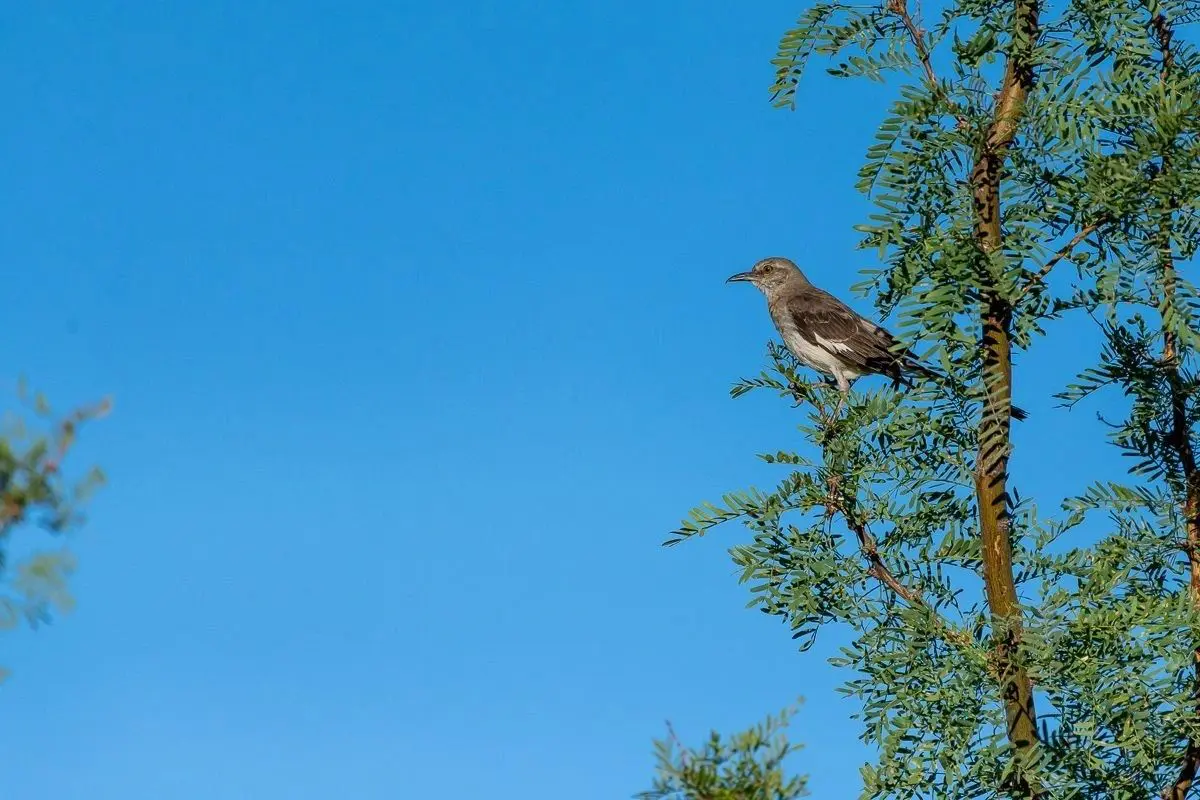The Northern Mockingbird

“Thwack! Ouch! What is going on? Goodness, I’m being attacked by a Northern Mockingbird!”
My head still remembers the thump and peck it got as a nesting mockingbird parent swept by, hissing like a steam engine. I was minding my own business on a dawn walk, but I got just that little bit too close to the nest and was told in no uncertain terms to clear out!
Northern mockingbirds are among the most territorial of birds, defending nesting territories in spring, and feeding territories in the winter. On the menu are insects and other invertebrates like snails and crayfish, small lizards and snakes, and many kinds of berries, including the Wolfberries found in Clark County Wetlands Park. Mockingbirds love berries, and their feeding territories often center on a particularly “juicy” berry patch.
“Mockers” are also famous mimics, able to imitate almost any sound they hear. Their scientific name comes from the Greek for “many-tongued mimic.” Individual birds may learn over 100 songs as well as the sounds of car alarms, squeaky wheelbarrows, barking dogs, human voices, frogs, the wing-boom of diving common nighthawks, and even pianos! And they sing at night – sometimes all night – as well as during the day, especially when there is a moon.
In flight and when “wing flashing” on the ground, Northern Mockingbirds show bold white wing patches. This makes them easy to identify, even from a distance. Watch for those white flashes and listen for car alarms where there are no cars — both could indicate a northern mockingbird nearby!
Please enjoy these two YouTube videos:
- Mockingbird “wing flashing”
- Mockingbird singing
– Chris Leavitt, Wetlands Park Friends President; photo by David Walker, https://www.naturallyvegas.com
